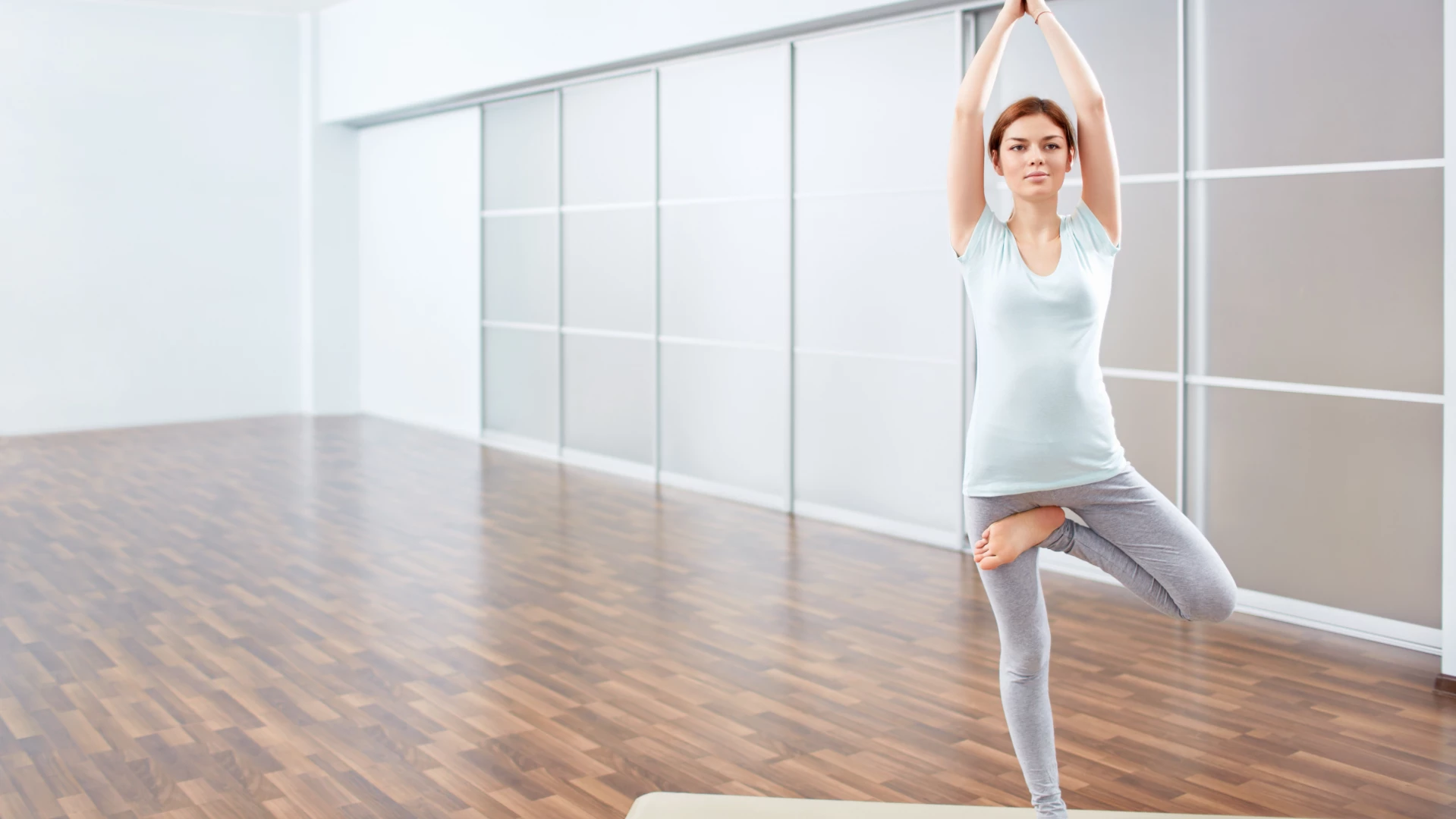The Broomstick Effect: The #1 Key to Perfecting Balancing Yoga Postures

Many years ago I read an article on balance in one of the yoga magazines and one visual that the author used had stuck with me. She talked about trying to achieve “broomstick effect” when it comes to aligning the body in balancing postures. Here is what it means.
The “Broomstick Effect” in Yoga
Imagine trying to balance a broom on your finger. When you do that, you watch the broom and try to predict in what direction it will lean and move in the same direction to even out its position. This is not too hard of a task because the broom is in one piece. Now imagine that instead of being one piece of wood, the broomstick consisted of several different pieces with somewhat loose joints between them. Now if you try to balance that broom on your finger you would have to pay attention to each individual segment, trying to figure out where each segment will lean and how it will affect the entire structure. This is much more difficult.

It works the same with your body in the balancing posture. Our bodies are not sticks; they have many joints, including ankles, knees, hips and all the joints between the vertebrae. So if you let your body be loose while you try to balance on one leg,  for example, you would have to monitor the position of each individual part and where it ends up in relation to other parts. This is a lot of work.
for example, you would have to monitor the position of each individual part and where it ends up in relation to other parts. This is a lot of work.
What would be easier? To turn your body into a broomstick! It doesn’t mean that we would want to stiffen it up and tense up the muscles. Instead we would want to create maximum length, just like we do in axial extension postures (poses that lengthen the spine along its axis). It means that we would want to lengthen up along the axis, creating length and stability in the body and minimizing the wobbliness of individual parts. That way the body becomes an integrated whole, a unit that is much easier to manage. Then your main focus would be on your foot and ankle. They would negotiate the balancing action and make necessary adjustments to maintain balance.
Preparations for Balancing Yoga Poses
That is why when we prepare for any balancing posture we focus on creating the sense of length in the body via axial extension postures. On top of that for specific types of balancing postures we do additional preparation:
– For leg balancing postures we spend a lot of time warming up and strengthening the ankles
– For arm balances we warm up the wrists and shoulders
– For arm-leg balances we warm up the hips, wrists and shoulders
– For seated balances we prepare the hips (especially the hip flexors) to counterbalance the weight of the upper and lower body.
This principle works really well for static poses that teach the body to maintain balance. But this is not as applicable to teaching the body how to regain balance when we slip or trip. Fortunately, there are other ways we can train for those situations.
Study Yoga for Core Integrity and Balance with Dr. Baxter Bell and YogaUOnline.
Also, read...
The Yoga Sutras: Practicing Non-Attachment without Becoming Detached
The Broomstick Effect: The #1 Key to Perfecting Balancing Yoga Postures
Related courses
Breath as Medicine: Yogic Breathing for Vital Aging
Yoga and Myofascial Release: Releasing Chronic Tension with the Bodymind Ballwork Method
Yoga and Detoxification: Tips for Stimulating Lymphatic Health

Educated as a school teacher, Olga Kabel has been teaching yoga for over 14 years. She completed multiple Yoga Teacher Training Programs but discovered the strongest connection to the Krishnamacharya/ T.K.V. Desikachar lineage. She had studied with Gary Kraftsow and American Viniyoga Institute (2004-2006) and received her Viniyoga Teacher diploma in July 2006, becoming an AVI-certified Yoga Therapist in April 2011. Olga is a founder and managing director of Sequence Wiz— a web-based yoga sequence builder that assists yoga teachers and yoga therapists in creating and organizing yoga practices. It also features simple, informational articles on how to sequence yoga practices for maximum effectiveness. Olga strongly believes in the healing power of this ancient discipline on every level: physical, psychological, and spiritual. She strives to make yoga practices accessible to students of any age, physical ability, and medical history, specializing in helping her students relieve muscle aches and pains, manage stress and anxiety, and develop mental focus.




